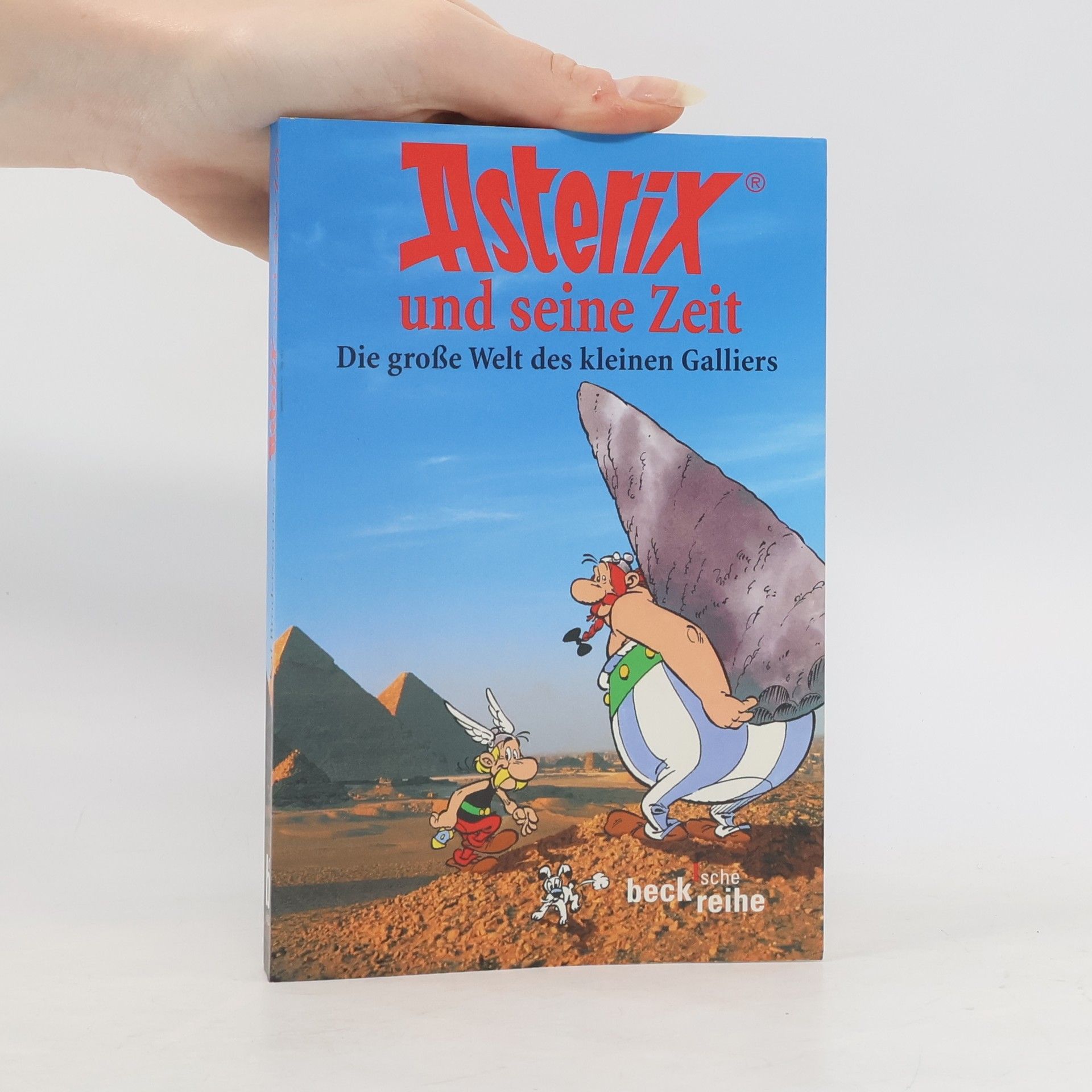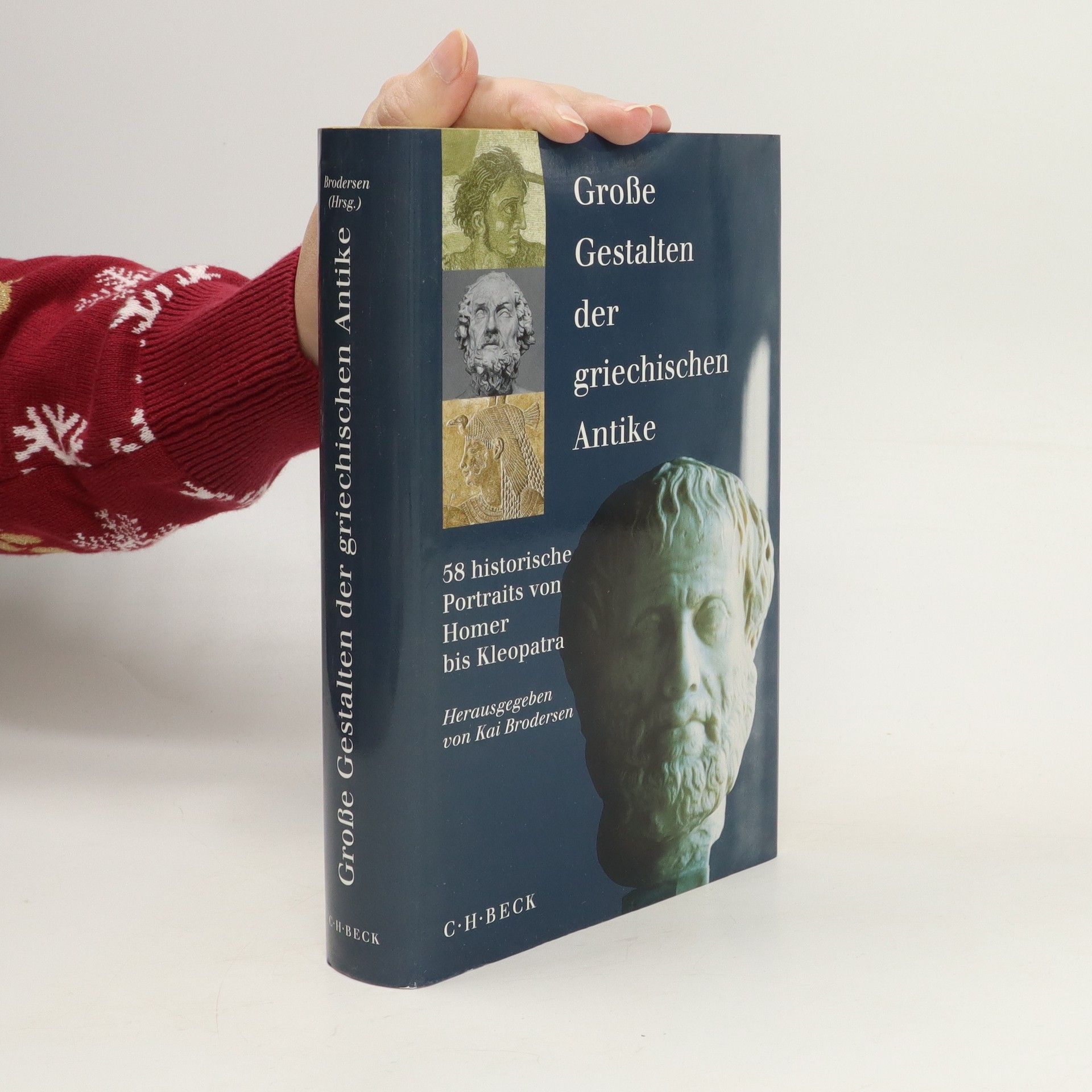Im 16. Jahrhundert erlangte Erfurt als bedeutender Bildungsstandort Anerkennung, insbesondere durch das evangelische Ratsgymnasium, wo Fächer wie Latein und Griechisch gelehrt wurden. Anton Moker, ein einflussreicher Professor für Poesie und Griechisch, übernahm 1583 die Leitung des Ratsgymnasiums und prägte dessen Entwicklung über zwei Jahrzehnte hinweg. Zudem blieb er aktiv an der Universität, wo er zur akademischen Blüte der Stadt beitrug.
Kai Brodersen Book order






- 2024
- 2024
Die Zahlentheologie, die unter dem Schutzheiligen Anatolios von Laodikeia und dem antiken Gelehrten Iamblichos von Chalkis entstanden ist, wird in diesem Buch thematisiert. Der Patriarch Photios zitiert ein Werk, das er Nikomachos von Gerasa zuschreibt, und verurteilt es als heidnisch. Seine Besorgnis über die Erhaltung dieses Textes spiegelt die Spannungen zwischen christlicher und heidnischer Philosophie wider und beleuchtet die kulturellen Konflikte der damaligen Zeit.
- 2023
Die Sammlung präsentiert wundersame Geschichten über Menschen, Tiere, Pflanzen und Bräuche, die von Aristoteles und Michael Psellos stammen. Diese zweisprachige Ausgabe ermöglicht einen direkten Zugang zu den faszinierenden Erzählungen der griechischen Kultur aus Antike und Mittelalter.
- 2023
Viel Sonderbares gibt es auf der Welt: merkwürdige Tiere und Pflanzen, Quellen und Brunnen, Flüsse und Meere. So wurde schon in der antiken Literatur - von den Epen Homers über die "Tierkunde" des Philosophen Aristoteles bis zu den gelehrten "Paradoxa" des großen Kallimachos - immer wieder von Sonderbarem erzählt. Die unter dem Namen des gelehrten Antigonos von Karystos (3. Jh. v. Chr.) überlieferte Sammlung bewahrt viele sonst verlorene Wunderberichte und wird hier erstmals in deutscher Übersetzung vorgestellt.
- 2023
"Felix Thuringia plaude", "glückliches Thüringen, applaudiere": Das steht in Erfurt auf einer Bau-Inschrift an den Kavaten (Substruktionen) des Dombergs. Wer durch Erfurt läuft, begegnet im Stadtbild immer wieder lateinischen Bau-Inschriften; die ältesten entstanden im 14. Jahrhundert, die jüngsten sind noch keine 25 Jahre alt. Zusammen bieten diese Inschriften einen vielfältigen Einblick in die Geschichte der Stadt. Dieses Buch soll den Zugang zu den Texten erleichtern und präsentiert dafür über sechzig lateinische Bau-Inschriften in Bild, in Text und (oft erstmals) in Übersetzung. Dies ist die dritte verbesserte und erweiterte Auflage.
- 2023
Martin Luther (1483-1546) schrieb 1524 an die Ratsherren der deutschen Städte: Wir brauchen neue Schulen, an denen die Alten Sprachen unterrichtet werden und die damit einen eigenen kritischen Zugang zum Bibeltext ermöglichen. Jungen und Mädchen sollten überhaupt gut gebildet werden, da die Kirche und insbesondere auch der Staat tüchtigen und gebildeten Nachwuchs benötigen. Es ist nun Aufgabe der öffentlichen Hand, diese Schulen und die dazugehörigen Bibliotheken zu errichten und dauerhaft zu finanzieren. Luthers Ratsherrenschrift führte schon bald vielerorts zur Gründung von evangelischen Ratsschulen, die oft noch heute als Humanistische Gymnasien Bestand haben. Die vorliegende Ausgabe präsentiert Luthers Schrift in Kopie, Transkription und Übertragung und erschließt sie mit einer Einleitung, mit Erläuterungen und mit einem Register. Auch nach 500 Jahren gilt nämlich: Wir brauchen Schulen, an denen die Alten Sprachen unterrichtet werden.
- 2023
Gesundheitsratschläge des berühmten antiken Arztes Wie kann man die Gesundheit erhalten und stärken? Der berühmte antike Arzt Galenos von Pergamon (129 – nach 220 n. Chr.), Leibarzt der römischen Kaiser, gibt in den hier versammelten Schriften einen Einblick in seine Lehren: Wer gesund sein und bleiben möchte, muss mit einfachen sportlichen Übungen sinnvoll trainieren. Unsere Gesundheit ist nach Galenos eben nicht nur Sache der heilenden Medizin und damit der Ärzte. Sie beruht vielmehr auch auf Gymnastik, mit der wir die eigene Fitness erhalten und steigern können. Der Band setzt die Reihe der zweisprachigen Neuausgaben des Corpus Galenicum in der Bibliothek der griechischen Literatur fort.
- 2022
Die "Schlangeninsel" im Schwarzen Meer ist heute in den Nachrichten präsent, war aber schon in der Antike berühmt: Hier wurden der homerische Held Achilleus und sein Geliebter Patroklos verehrt. Diese und viele weitere Informationen aus der Mythologie und Geschichte des Schwarzmeergebiets schrieb bald nach 130 n. Chr. Lucius Flavius Arrianos für den römischen Kaiser Hadrian auf. In einer Verbindung von freundschaftlichem Privatbrief, militärischem und diplomatischem Report und gelehrtem Diskurs beschreibt Autor eine Schifffahrt rings um das Schwarze Meer, also einen Periplus des Pontos Euxeinos. Einige Jahrhunderte später wurde die Schrift - noch immer unter dem Namen des Arrianos - aktualisiert und erweitert. Die neue, nun in 2., verbesserter Auflage vorliegende Ausgabe von Kai Brodersen bietet beide Werke erstmals in deutscher Übersetzung und präsentiert sie in einer zweisprachigen Ausgabe allen, die sich für das antike Schwarzmeergebiet interessieren.
- 2021
Galen, der bedeutendste Arzt der römischen Kaiserzeit, argumentiert in seinen Schriften für die Notwendigkeit einer philosophischen Bildung für Mediziner. Seine Werke, darunter "Über seine eigenen Bücher" und "Protreptikos", bieten Einblicke in seine Ansichten zur Medizin und Philosophie. Galen betont, dass der beste Arzt auch ein Philosoph sein sollte, um die Verbindung zwischen beiden Disziplinen zu stärken. Diese zweisprachige Ausgabe enthält eine umfassende Einführung, Anmerkungen und einen Anhang, die den erweiterten Textbestand und die Relevanz seiner Ideen verdeutlichen.
- 2021
